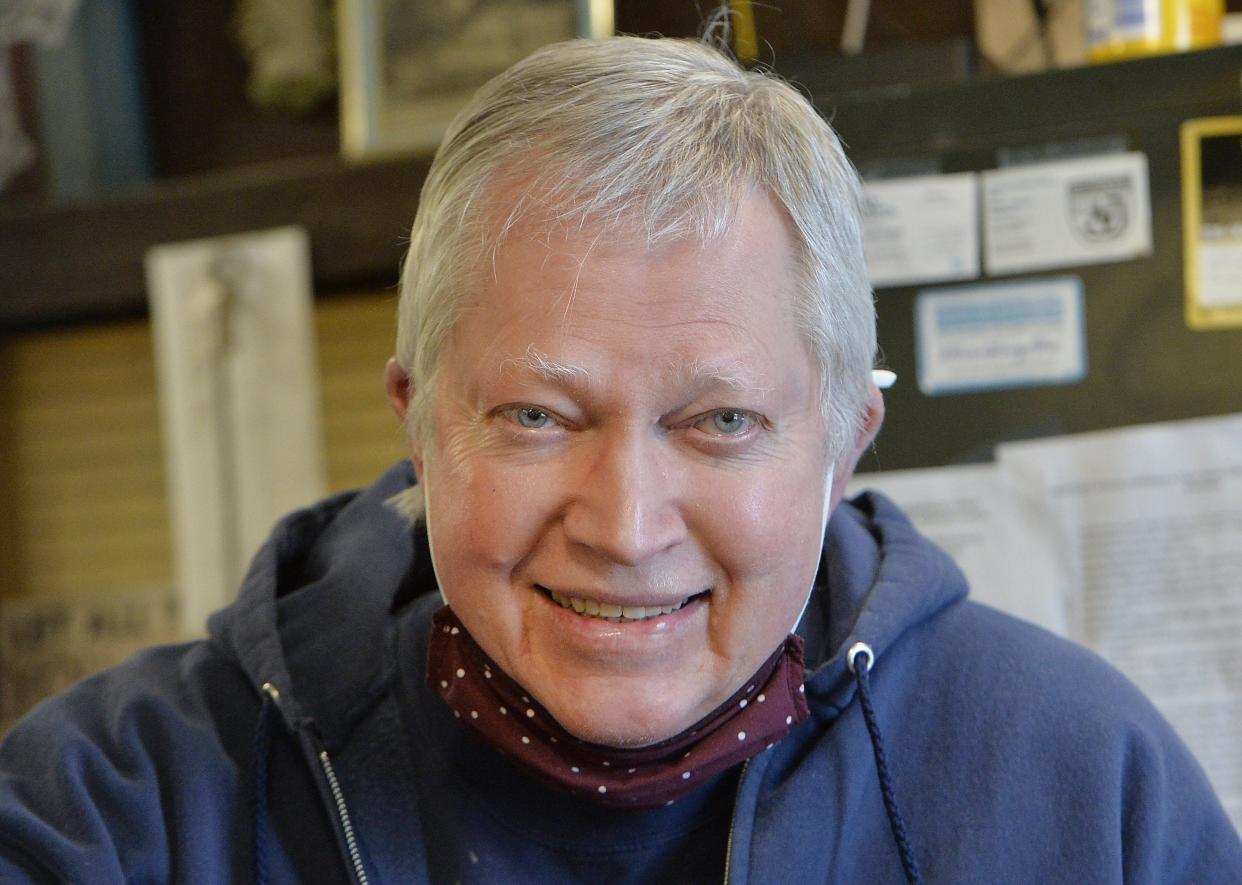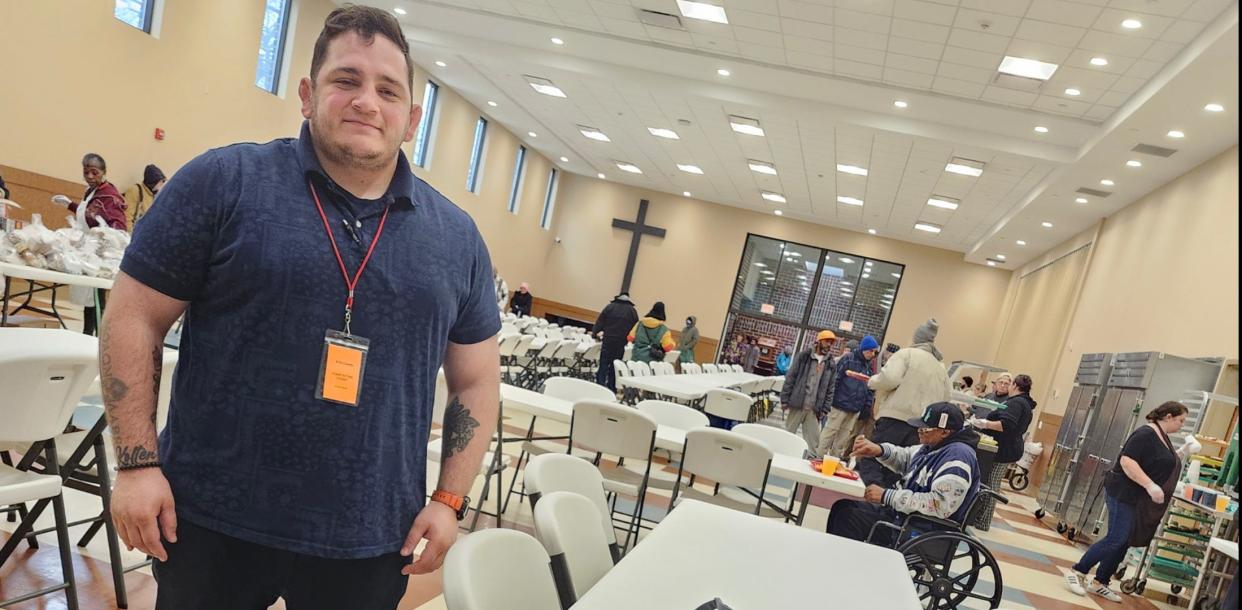Erie officials want to spend up to $35 million on permanent housing for city's homeless
A multi-year plan, which could cost up to $35 million, has been launched to create permanent supportive housing in Erie for people experiencing chronic homelessness.
The plan involves constructing a multimillion-dollar new facility in the city of Erie, at a location that has yet to be determined, that would provide long-term housing for up to 50 homeless individuals and feature on-site supportive social services such as medical care and mental health counseling.
Further, the initiative would also create additional permanent shelter for the homeless at up to 100 Section 8-eligible rental units scattered throughout the city.
Nearly $3 million in federal COVID-19 relief funds received by the city of Erie, earmarked for helping the homeless, as well as private/philanthropic donations and low-income housing tax credits would fund the initiative, officials said.
Erie Mayor Joe Schember, Erie County Executive Brenton Davis and others involved in the plan's development are expected to discuss it at a Thursday morning news conference at City Hall.
The effort is largely being driven by Infinite Erie, a group launched to implement Erie's Investment Playbook — a set of 35 tangible initiatives and transformational projects.
The playbook recommends that Erie create mechanisms to provide more assistance to people experiencing homelessness.
The Erie Times-News reported on Jan. 31 that local officials were developing the supportive housing plan. The information was included in a story on Erie County’s annual Single Point In Time count of the region's homeless population.
Cleveland-area facility could be a model
The initiative marks the first large-scale collaboration of both public and private-sector groups in Erie when it comes to a forging a sustained solution regarding homelessness, said Charles “Boo” Hagerty, president of Hamot Health Foundation.
The foundation is among the local entities working on the plan, developed with the assistance of Wyatt Schroeder, a nationally-known supportive housing consultant. Schroeder is being paid $100,000 for his work.

“The shelters and all the agencies doing the work do phenomenal work,” Hagerty said. “But there’s an overflow. We wanted to really look at that permanent (housing) model… This is the right thing to do for Erie.”
In developing the plan, Erie-area officials have toured similar housing developments for the homeless.
One of those was the Emerald Commons complex in Cleveland, which opened in 2006 and features 52 housing units for homeless residents. Emerald Commons' developer, Cleveland-based CHN Housing Partners, could create the Erie facility as well.
The plan would require the hiring of a team/project leader, case managers, and behavioral and housing specialists. Officials must also secure significant financing.
Renee Lamis, Schember's chief of staff, said about 80% of the funding would come from housing tax credits that local officials have yet to apply for.
Such tax credit programs allow businesses to invest in housing-related projects and, in exchange, those businesses get a percentage of their financial investment back via tax credits.
The initiative plans to spend up to $1 million to secure at least 25 of the 100 Section 8-eligible rental housing units for the homeless by July 1, either through acquisition/rehabilitation of existing properties or lease agreements with existing property owners.
The Section 8 program, administered by the U.S. Department of Housing and Urban Development, involves federally funded rent subsidies.
Over time, local officials also hope to establish a multimillion-dollar "social impact investment fund," according to documents provided to the Erie Times-News, which would provide long-term financial support for various supportive housing projects in the region.
The scope of homelessness
The plan is being designed as a direct response to recent data about Erie’s homeless and the type of support they need, according to local statistics and surveying, particularly the unsheltered population.
Erie-area’s unsheltered homeless population is defined by HUD as individuals who frequently take shelter in a place not meant for human habitation, such as a car, park, sidewalk, abandoned building or on the street, and those who frequent overnight emergency shelters but have no permanent address.
According to statistics/data compiled by Schroeder and Erie County government:
Nearly 1,100 people are homeless in Erie at a given time each year. Forty people were classified as unsheltered in 2023, according to county statistics. As recently as 2020, the unsheltered count in Erie County was eight people — a 400% increase.
There are as many as 127 households experiencing long-term homelessness in Erie annually.
Long-term homeless populations are 23% more likely to need mental health services than those who are homeless for short periods of time.
Long-term homeless populations are 18% more likely to need drug & alcohol services than those experiencing short-term homelessness.
Lamis said local officials wanted to forge a long-term solution to assist chronically-unhoused individuals with deep service needs.
Further, the unsheltered homeless population has grown since the COVID-19 pandemic began in March 2020, she said.
That has led to numerous complaints from downtown businesses, residents, visitors and others about homeless individuals that include panhandling, public urination/defecation and people sleeping on sidewalks, behind buildings, in parking garages or in Perry Square.
The new supportive housing facility, which would feature one-bedroom studio-type units, would be for adults only; both individuals and families would be eligible to live in the various Section 8-eligible apartments located throughout the city.
The first client could move into one of the apartments as early as July 1.
Local homeless advocates and others who work with the unsheltered population would help select residents for both the new housing facility and those who would live in the apartments.
'A place of compassion'
Karen Bilowith, CEO of the Erie Community Foundation and chairwoman of Infinite Erie's Erie Action Team, said local officials want to approach long-term solutions to homelessness “from a place of compassion.”
Before coming to Erie in 2021, Bilowith was CEO of the Idaho Community Foundation, headquartered in Boise. That city launched similar supporting housing efforts, including the construction of an apartment community for chronically-homeless individuals.
“What was happening there was a very similar situation (to Erie) in a lot of ways,” Bilowith said. “There was a homeless encampment right downtown… The service community came together and developed the solution, the ‘housing first’ model that we’re working on here."
Bilowith said agencies currently assisting the Erie region's homeless are doing outstanding work.
However, "permanent housing is different," Bilowith said. "It's housing. It's not shelter."
Advocates for Erie's homeless weigh in
Supportive housing models like the one pitched in Erie “seem to work if done right,” said Cris Taylor, executive director of the Upper Room daytime homeless shelter, located on the second floor of St. Paul’s United Church of Christ, 1024 Peach St.

Taylor has attended meetings about the plan. He has also said that the unsheltered homeless population in Erie is almost certainly underreported and even larger than statistics show.
“Providing the supportive services, as well as housing, is very important,” Taylor said. “Not just the wrap services but life skills instruction.
“The biggest benefit is you’re going to provide a means to really help your chronically homeless population in Erie on several levels. Not just housing. It’s better than doing nothing. It’s an expensive thing, but it’s also a good thing.”
Kane Patron, a local homelessness advocate, also supports the plan.

“Ultimately this is going to be good. A low-barrier shelter that really helps people and has the supportive services on-site that they need,” said Patron, who does outreach work for Harvest 912, a local nonprofit that fights housing insecurity.
Patron is a former emergency shelter director at Erie’s Community Shelter Services who grew up homeless in Erie and spent time living in local shelters. He often reaches out to dozens of homeless individuals living in local wooded areas and other outdoor locations, offering various types of assistance.
“This is needed in Erie,” Patron said. “And having professionals involved with the right kinds of tools and experience like (experienced social workers with master's degrees) will be a big weapon in combating homelessness here.”
Contact Kevin Flowers at kflowers@timesnews.com. Follow him on X at @ETNflowers.
This article originally appeared on Erie Times-News: Why the Erie region could see a new housing facility for the homeless
